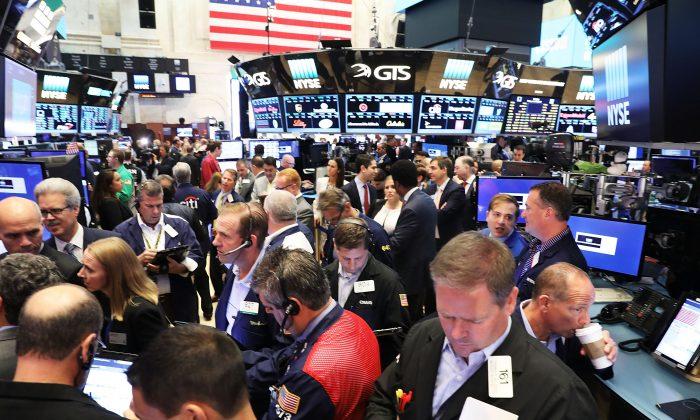Shifting expectations—that’s been the name of the game affecting U.S. stocks for the first half of 2017, according to Alan Robinson of RBC Wealth Management.
According to FactSet, analysts in aggregate predict the S&P 500 will see a 9.3 percent rise over the next 12 months. It has risen 15.3 percent in the year ending June 30, 2017.
Robinson says RBC’s 2017 year-end target of 2,600—implying a greater than 7 percent gain—is based not so much on a strong economy but on a strong earnings picture for corporate America. At the start of 2017, RBC’s year-end target was 2,500.
As of June 30, the S&P 500’s forward 12-month price-to-earnings ratio was 17.4—which is 24 percent higher than the 10-year average of 14.0. Robinson says a P/E ratio as high as 18.6 is justifiable given the below-normal interest rates and that investors seem to have plenty of cash on the sidelines. It also factors in uncertainty over actual 2018 earnings given that their $140 earnings estimate for 2018 has some government spending built into it.
“We don’t think 18.6 is particularly expensive. The 18.6 is not that high as we see it,” Robinson says in a phone interview.
RBC has tended to be quite upbeat on U.S. stocks. By contrast, investment banks Goldman Sachs and Citi forecast small declines with 2017 S&P 500 year-end targets of 2,400 and 2,425 respectively.
Another example of the “Trump slump” is the U.S. dollar. As of June 30, it was down 5.6 percent in 2017—its worst two-quarter decline since 2011, according to the Wall Street Journal.
As a result, large-cap stocks easily outperformed small caps, since they tend to generate a greater proportion of their revenue internationally.
Bullish on Financials
Financials has been one of the underperforming sectors in 2017 as inflation failed to materialize and the banks’ net interest margins—difference between the rates banks lend and borrow—shrunk.Going forward, analysts see better days for financials as markets expect a slower rise in short-term rates. With the banks’ stress test results in the rear-view mirror, Goldman said in a note to clients, “The Federal Reserve … eased restrictions on bank payouts, which we believe will drive Financials stocks higher.”
There continues to be hope for lighter regulation on banks and, in an expensive market, the financials are relatively cheap.
“I don’t think we'll need much in the way of actual policy changes for the banks to perform well,” Robinson says.
Even with U.S. stocks looking like a good place to be for at least the remainder of 2017, many analysts are more positive on Europe mainly because U.S. stocks are more expensive.
Also, with the political situation in Europe looking less fractious—far-right candidates were defeated in Dutch and French elections—pro-growth policies are likely to continue.
Robinson says the European Central Bank’s more “hawkish” tone reflects an improving economy, but not one that signals an urgency to raise rates. “I wouldn’t be surprised to see them [the ECB] continue to talk up the economy there to try and get sentiment going,” he says.
While central banks in the U.S., Europe, and Canada are leaning toward higher rates, stocks are taking it in stride and economic data is more relevant to the market for the time being than monetary policy.
Stocks are still in the “Goldilocks” scenario. The usual risk factors, such as economic growth (recession unlikely), interest rates, and corporate earnings point to further appreciation.
“The good thing is the market has very little help from politicians factored into its outlook. It’s all based on underlying corporate strength in the global rebound that we’ve seen,” Robinson says.







Friends Read Free